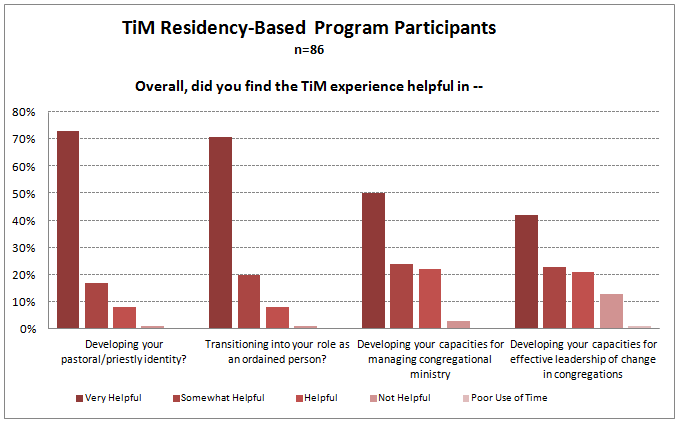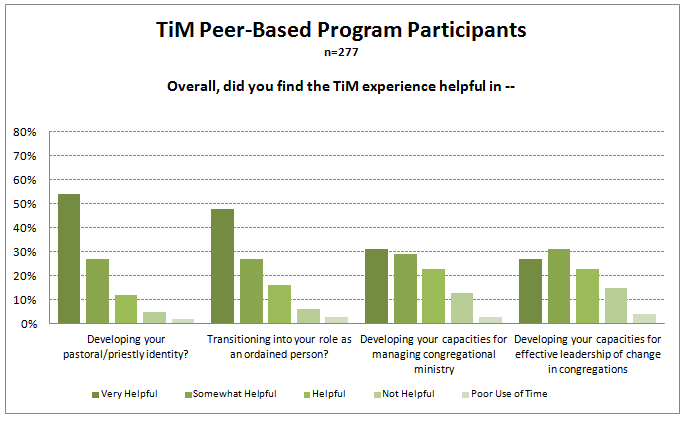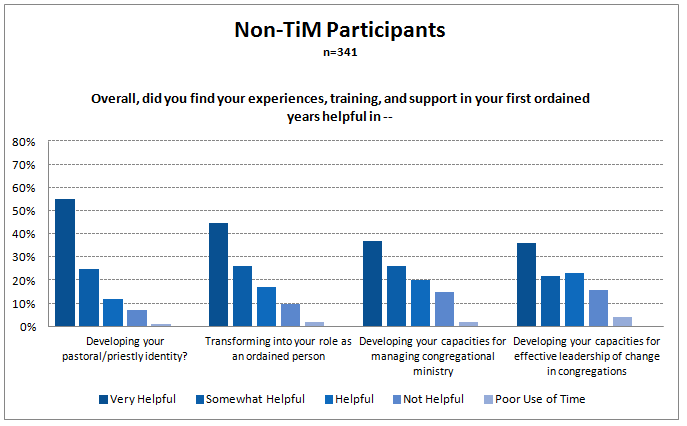There are many visual signals that announce that someone has been ordained. In many Christian traditions, the clerical collar is immediately recognized as the external manifestation of an identity as clergy. But what of the internal processes of identity?
Developing into a role takes a tremendous amount of time and introspection. Unfortunately, this time is not necessarily granted. One participant in a Transition into Ministry (TiM) residency program expresses this perfectly:
“You walk in with pastoral authority that you didn’t earn yet: ‘I’m not an authority figure … Don’t look at me as an authority figure’ … but that’s not how it works. So, you have to exercise it well and you have to exercise it humbly … So, that was something that we talked about a lot in the TiM program was pastoral authority.” The Rev. Hannah Jeong, Good News Presbyterian Church
How can new clergy gain confidence in this role, and what types of programs best assist them in the transition from seminarian to pastor, priest, or minister?
We surveyed three groups of ordained clergy. Two of the three comparison groups were involved in Transition into Ministry (TiM) programs. Those who had attended a peer-based TiM program post seminary met consistently and formally with other post-seminarians for support and guidance. Those in TiM residency programs had mentors and senior clergy who provided support in-house for a period of 1–3 years. The third group (which we’ll refer to as Non-TiMs) did not participate in formal development programs.
We asked about the helpfulness of post-seminary experiences in four areas:
- Developing your pastoral/priestly identity
- Transitioning into your role as an ordained person
- Developing your capacities for managing congregational ministry
- Developing your capacities for effective leadership of change in congregations
While all responses were generally favorable, clergy who had participated in residency-based TiM programs were most positive overall about the training they received.
Residency-based TiM programs produced more positive evaluations of identity (98% of residency-based rated this helpful or above), role transition (99%), and capacity for managing congregational ministry (96%) than non-TiM or peer-based programs. The response “Poor use of time” was not used by any residency-based participant for those three questions. The fourth question, developing capacities for effective leadership for change, was rated positively, but not as highly by any of the respondents.
Residency-based participants were more likely than the other groups to express that the residency program was “very helpful” in developing those three aspects of ministry.
One residency participant summed up her experience with a supervisor as exemplifying each of these areas:
“He taught me what it meant to run a church. He taught me how to minster with integrity … He has taught me that your word is your bond, to be truthful in all things … He taught me about boundaries, when to let people in and when not to … Know when to pick your battles and when not to. He taught me what it means to shepherd the people. What does shepherding really mean? It means being there with them, listening to them, holding their hand when they need to be held. He taught me how to delegate to people, because you can’t do everything even though you want to.” The Rev. Bethany Harris, Trinity AME Church
Reponses from both the non-TiM and TiM experience were on the positive spectrum. However, residency-based programs were rated highest overall in assisting clergy in forming the pastoral identity, transitioning into the role, and developing the capacities to manage ministry.
Related Articles
- Research: Transition into Ministry Programs Reinforce Clergy Strengths, Overlook Some Areas of Weakness
- Research: What’s Taught, What’s Not—In Seminary and Afterward





